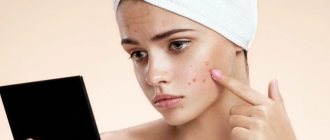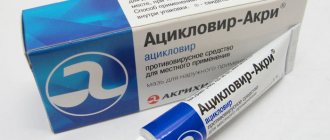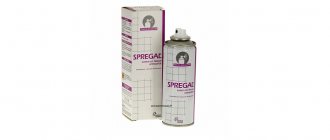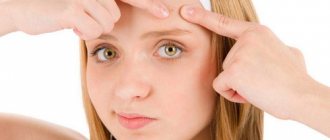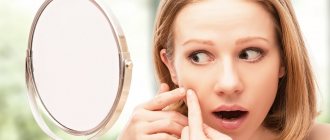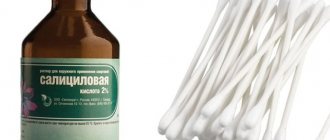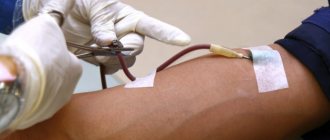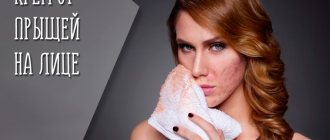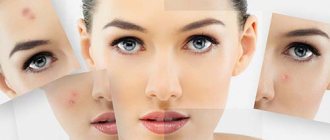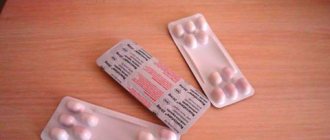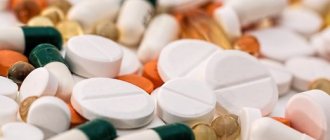- What Causes Severe Pimple Pain?
- What to do if a pimple hurts very badly?
- Medicines to relieve pain and treat painful acne
- Effective Treatments for Severely Painful Acne
There are two types of breakouts: medium blackheads and whiteheads, which are mildly irritating and then, during the next phase of inflammation on the acne skin, pimples may appear, accompanied by pain or itching, purulent discharge. Huge, painful subcutaneous pimples are more commonly known as cysts or papules "These types of acne tend to be much deeper in the skin."
Unlike standard acne, cystic, painful and large subcutaneous pimples can cause severe discomfort and pain as they are deeply rooted in the skin tissue.
These cystic breakouts can happen anywhere, but dermatologists say they tend to be more common in the lower third of the face and around the chin. Additionally, often these deep or subcutaneous painful acne lesions are often associated with hormonal acne in women, which is why you may notice them appearing in one specific place every month on certain days of hormonal fluctuations in your body.
Why does a pimple hurt?
I have already talked about the mechanism of acne in detail in another article.
In short, this is the result of blockage of the sebaceous ducts. But not all rashes become painful. Some of them, for example, millet, may not be disturbed for months. If left untreated, even they can later become a source of problems, but at the initial stage they do not cause any significant inconvenience. Painful sensations appear in the following cases:
- there is an active inflammatory process - it is accompanied by redness, swelling of the tissues, the rash can be very itchy;
- the sebaceous ducts are filled with pus - this happens when pathogenic microbes multiply inside the pimple, which the body is trying to fight;
- in case of mechanical damage to the skin - we are talking about basic combing, piercing or squeezing out pimples.
The most unpleasant and complex of these are deep, pus-filled, internal pimples. I have already written about the reasons for their formation and ways to combat them in another article. The rest are much easier to deal with, including using traditional methods. But it will be possible to cope with the problem once and for all only when its main source is identified and eliminated. And it can be internal or external.
Retinoids
Treatment with retinoids is the most effective method of eliminating severe acne. New generation drugs are designed to suppress the growth and development of skin cells. Used to get rid of acne caused by impaired secretion of the sebaceous glands or hormonal “changes” in the body.
The most effective retinoid to reduce subcutaneous fat production
Unfortunately, the effectiveness of the drug is almost always accompanied by the presence of an extensive list of side effects, which are among the disadvantages of the above-mentioned therapy.
The main ones:
- use of the drug during pregnancy can cause allergic reactions, fetal deformity, or provoke the development of serious illnesses in the baby;
- dry skin, blurred vision;
- dysbacteriosis, skin sensitivity to ultraviolet radiation, nervous disorders;
- long course of treatment (up to 4 months).
The ideal representative of retinoids is the drug Roaccutane , which minimizes the intensity of subcutaneous fat production. Slightly inferior to it in effectiveness, but attractive due to its availability, is the domestic product “Retinol” (Retinol Palmitate). The drug “Isotretinoin”, prescribed by doctors for the cystic form of rashes, will help to get rid of rashes for a long time.
Main reasons
Provoking factors for small red pimples or small multiple pustules are most often external: failure to comply with basic hygiene rules, abuse of decorative cosmetics, use of low-quality or unsuitable skin care products. Lack of treatment can lead to the development of the second stage of anke - its papulopustular form.
Often popping up, especially multiple subcutaneous pimples, painful in various parts of the face and body, may have causes that indicate serious problems in the body that cannot be ignored:
- severely weakened immunity;
- the presence of viruses or infections in the blood (syphilis, staphylococcus, HIV);
- exacerbation of chronic diseases;
- disruptions in the endocrine system;
- intestinal problems;
- general intoxication of the body.
But not all people with the health problems listed above have painful acne on their face. Lifestyle and external provoking factors also play a significant role.
The work of the sebaceous glands
Often the main locations of oily shine are the forehead, chin, nose, and less often - the back, shoulders and chest. At the same time, in your quest to get rid of excess fat, you need to be very careful not to cause harm, since sebum-producing glands play a very important role in our body. They protect skin cells from the adverse effects of the environment, and also help maintain the necessary water balance and are a transport route for vitamins.
When overworked, they also create a favorable environment for the development of bacteria, which leads to acne, clogged pores and blackheads, as well as difficulty applying makeup. A positive aspect in the case of oily skin is the fact that its owners face wrinkles later than their peers and look younger than their age.
Experts also call this problem seborrhea. The causes of oily scalp, back, chest, as well as the armpit and navel area are the same. Small pimples, blackheads or acne may appear in these areas, the skin may also peel (called dry seborrhea), and dandruff may appear on the head.
Lifestyle influence
A pimple hurts when it becomes inflamed and/or filled with pus. These processes are provoked by pathogenic microbes when the immune system cannot restrain their rapid reproduction. Accordingly, if a person leads an unhealthy lifestyle and does not follow the principles of a healthy diet, his chances of having clear, beautiful skin are significantly reduced.
Here's what can contribute to the formation of rashes:
- vitamin deficiency or hypervitaminosis (often due to improper use of pharmaceutical complexes);
- frequent colds, hypothermia or overheating of the body;
- severe or prolonged stress, constant overload and lack of sleep;
- eating a lot of sweets, baked goods, fatty, fried, spicy and salty foods;
- improper diet - with a lack of water, toxins are poorly eliminated;
- bad habits - smoking, alcohol, abuse of coffee and strong tea;
- frequent allergic reactions that do not stop, including to food.
It is especially important to prevent the significant influence of the provoking factors listed above during adolescence, during pregnancy, before menstruation, and in premenopause. Then the hormonal background is unstable for natural reasons, so the sebaceous glands already work too intensely.
How to get rid of acne in summer: on the face and body
As for treatment, everything is even simpler. Firstly, if you don’t touch the skin with your hands and don’t aggravate the situation, then everything will go away by itself. Indeed, if acne appears in the summer due to the sun or ultraviolet radiation, then it will go away on its own, and as quickly as it appeared. But if you have problems with this or want your acne to disappear faster, you can try:
- skincare cosmetics designed to treat acne;
- salicylic acid;
- zinc ointment;
- Iodinol.
But you should understand that all of the above remedies are antibacterial, drying drugs. That is, they will not only kill all harmful microorganisms that cause acne in the summer, but will also most likely dry out the skin. And in the summer, when the epidermis already suffers from a lack of moisture and protection, this is not the best option. Therefore, we recommend that you still leave this situation to be resolved without your participation.
What to do
As I already said, before dealing with painful pimples on the face, you need to find out why they pop up and, if possible, eliminate these causes as much as possible. This can be done faster and more accurately with the help of a specialist. I always recommend starting an intensive course of treatment with a visit to a cosmetologist or dermatologist.
Diagnostics
A good doctor can already guess what the problem is by the appearance of the rash:
- Small white pimples are often hormonal in nature and may require medical correction of the background.
- A red rash, which can be painful and very itchy, often indicates the onset of chickenpox; it affects not only children, but also adults.
- Dense, painful subcutaneous pimples located in groups allow one to suspect furunculosis, especially if they appear repeatedly.
- A rash all over the body or strictly in certain areas, which occurs against a background of stress, indicates a manifestation of psychosomatics and sometimes turns into eczema.
- Small subcutaneous pimples, which then become inflamed, are often also colds.
You may have to undergo a short examination and tests to determine the most effective medications and procedures.
Pharmacy drugs
Taking antibiotics or hormone-containing drugs internally without consulting a doctor is, to say the least, unwise. If you choose the wrong medicine, the problem can only get worse, and some of them have serious side effects.
External means can and should be used:
- On a natural basis: propolis, ichthyol ointment, Vishnevsky liniment. They are practically harmless and have a minimum of contraindications. Therefore, they are even used to treat rashes in children and adolescents. They have an antiseptic and anti-inflammatory effect, draw out pus well, and promote rapid healing of wounds.
- With antibiotics: syntomycin, tetracycline, erythromycin and other ointments. They have a detrimental effect on certain types of microorganisms. They help get rid of ulcers faster, remove redness, inflammation and itching. There are many contraindications, you need to familiarize yourself with them before purchasing the drug.
- Essential oils. Used to cauterize single pimples or added to ready-made creams and lotions to more effectively cope with the rash. Golden Star balm with camphor and menthol relieves inflammation and pain well. In its pure form it is applied pointwise. Please note that some types of oils are strictly contraindicated during pregnancy and all of them can provoke severe allergic reactions.
- Sulfur chatter . It has the most direct effect on the activity of the sebaceous glands. It has an anti-inflammatory effect, relieves redness and flaking of the skin. It is harmless and has almost no contraindications. But it is ineffective against subcutaneous acne and boils.
- Alcohol tinctures and iodine. They are used in their pure form, point-by-point, to cauterize acne. At first, a strong burning sensation may be felt, but then the pain and inflammation quickly decrease. Use no more than 2-3 times a day to avoid causing severe skin burns.
During the period of intensive treatment, it is useful to replace ordinary toilet soap with tar soap. It also slightly reduces the activity of the sebaceous glands, has an anti-inflammatory effect, and creates unfavorable conditions for the proliferation of microbes.
Folk remedies
The effectiveness of folk remedies in the treatment of painful acne, especially subcutaneous acne, is very relative. Much depends on the nature and type of formations. But if there are few rashes and there is no suspicion of serious pathologies in the body, then you can try the following:
| Means | Description |
| Sea salt | Lotions made from it do a good job with small ulcers and quickly remove inflammation. But frequent use dries out the skin greatly. |
| Toothpaste | Not just any, but only with a predominance of natural ingredients. Vigorous chemical will only increase irritation and itching. |
| Clay application | Stops the inflammatory process, acts antibacterial, absorbs fat and toxins. But it tightens the pores, so you shouldn’t use it on immature subcutaneous acne. |
| Aloe with honey | A great way to quickly remove pain and redness and remove purulent contents out. The composition promotes tissue regeneration and is an excellent prevention of post-acne marks and spots. |
| Plantain | A leaf applied to a pimple at night will draw out pus, reduce inflammation, relieve redness and itching. |
| Garlic | It is one of the most powerful natural antibiotics. Contains essential oils that can penetrate into the deep layers of the epidermis. Perfectly relieves itching, inflammation and pain. But thin and sensitive skin can be irritated to the point of burning. |
| Lemon juice | Dissolves excess fat and sebaceous plugs, deeply cleanses pores, whitens the face, evens out skin texture. Helps with inflamed and painful acne. |
| Herbal infusions (chamomile, calendula, celandine, St. John's wort, coltsfoot, sage) | Can be used in the form of lotions, lotions, ice cubes. For painful ulcers, cryotherapy is contraindicated. |
| Powdered streptocide | A powerful antiseptic and anti-inflammatory agent. The tablet is mixed with a small amount of honey and applied to the affected area of the skin. |
You can find several more effective ways to deal with subcutaneous acne at home in another article on our website. Remember that you should not squeeze deep-seated pimples. Not only may this leave a bruise or form a lump, but there is a risk that infection and pus will enter the bloodstream and cause sepsis.
Drugs that reduce sebum production. Acne vulgaris or juvenile acne
Acne is the most common skin disease among adolescents and young adults, that is, the most socially active part of the population. This unpleasant disease affects about 85% of people aged 12 to 25 years in European countries, so clear skin at this age is the exception rather than the rule. The presence of inflamed pimples, pustules and ulcers, blackheads (comedones), spots and scars, a greasy, untidy appearance of the skin in the most visible places causes difficulties in communication, professional organization, reduces self-esteem, and often leads to the formation of significant psycho-emotional disorders, even the desire for complete isolation. Some young people stop leaving home, give up school and work, become isolated, and eventually a minor and completely banal skin problem develops into a personal tragedy. A patient who consults a dermatologist about acne has serious psychological problems. Shyness, guilt, a sense of social unacceptability, anger, depression, and disbelief in the possibility of a cure are expressed to varying degrees. Intense experiences aggravate the course of the disease. In stressful situations, patients, especially women, pick at the skin and squeeze out acne, which further worsens the appearance of the skin due to associated inflammation. In such injured areas, scars and spots remain that do not go away for a long time.
Summing up
Often, in order to finally cope with painful acne and prevent further breakouts, you have to significantly adjust your diet, and sometimes even reconsider your entire lifestyle. First of all, it is necessary to remove all the provoking factors that we talked about above. And then - provide competent and regular skin care. Otherwise, all measures taken will give only temporary results.
I will be grateful if you share your experience and reviews of folk and/or pharmaceutical drugs in the comments. Perhaps you have your own “secret” products or recipes that allow you to quickly get rid of acne on your own at home. Or did the doctor’s help turn out to be necessary and effective?
Is it possible to prescribe treatment on your own?
Even external treatment preparations are best selected according to the recommendations of specialists, and oral use of tablets, given their multiple side effects, is strictly contraindicated without consulting a dermatologist.
The doctor will prescribe the correct treatment based on the test results
Before prescribing a course of treatment, an experienced doctor will study the results of all necessary tests, and only after making sure that there are no allergic reactions to the components of the drug, and intolerance to some components of the drug, will he safely recommend suitable tablets for use.
Self-medication in this case can lead to dire consequences, including death. If you dare to declare war on unaesthetic formations on your face, remember that excessive self-confidence can “reward” you with more serious diseases that could easily be avoided.
Photo: Before and after
A painful rash on the face can appear regardless of age. The inflammatory process forms under the skin.
The ducts of the sebaceous glands can become clogged with sweat and dead cells. In this regard, purulent contents accumulate inside them, and a boil is formed.
See how to treat acne vulgaris. Causes of acne on the forehead in women. Find out further.
Why do whiteheads appear on the nose? The answer is here.
This rash is painful and causes significant discomfort. Therefore, when initial symptoms appear, it is necessary to seek advice from a specialist.
Prevention measures
A consultation with a doctor will make it possible to determine what was the initial cause of the painful rash on the face. Measures to prevent this unpleasant phenomenon are important.
To prevent pathology it is necessary:
- reconsider your lifestyle;
- adjust your diet, get rid of bad habits;
- follow hygiene rules;
- if necessary, treat with ozone therapy;
- use cosmetics of appropriate quality.
By following the above instructions, it is possible to prevent the appearance of painful acne on the surface of the face.
How to hide
Small pimples, which are rarely located on the skin, can be hidden using decorative cosmetics. But to prevent inflammation from developing, it is necessary to apply an anti-inflammatory ointment to the affected area half an hour before.
Also, if the pimple is small, you can drop some eye redness liquid on it. It will narrow the capillaries, which relieves redness. And without a change in color, the swelling on the skin is almost invisible.
It is important to remember that when applying cosmetics to the affected area, you should not use common sponges and brushes. To do this, use cotton swabs, applying them pointwise to the sore spot.
Unfortunately, this approach does not work on large pimples. After all, they are a serious inflammation and react negatively to any products covering the skin.
Also, due to the increased temperature around the pimple, cosmetics will be applied unevenly. Even if you manage to disguise the redness, it is absolutely impossible to hide the compaction.
Therefore, to cure the disease, it is necessary to urgently contact a dermatologist, who will prescribe tests to find out the cause of the inflammation and will treat it.
